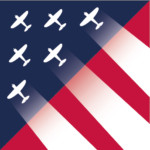Loss of Wake Island Sent American Morale to New Low
The Battle of Wake Island pitted a small American force against a large Japanese force. The Japanese attacked the remote Pacific island outpost just hours after their surprise attack on Pearl Harbor on December 7, 1941. Sixteen days later, Japanese troops stormed ashore and Wake Island’s defenders were overwhelmed. American morale plummeted.
Because word of the Pearl Harbor attack was flashed to U.S. commands, American military personnel and civilian contractors on Wake were ready, but they were not well prepared. The understrength Marine Corps garrison had 6 big guns from the old battleship USS Texas; 12 anti-aircraft guns but only one gun director; and 48 heavy, medium and light machines guns but not enough people to man them all. The single runway was long enough, but so narrow that only one plane could take off at a time. Fueling of the 12 Marine Wildcat fighters was by hand. There were no revetments. There were no maintenance facilities to speak of. There was no radar. There were shortages of just about everything, including tools and spare parts. Repairs, like everything else, were left to determination, ingenuity and skill.
Four of the Wildcats were scrambled immediately, but they failed to see the approach of 36 Japanese bombers from Kwajalein in the Marshall Islands. Forty-four men were killed, including 34 of the 524 Marines. A huge aviation gasoline supply was lost and seven Wildcats were destroyed on the ground. The propeller of another was splintered by debris while taxiing.
Two days later, as Japanese ships shelled the island, Marine air and land attacks sank two destroyers and damaged two more. A pair of Wildcats shot down two Japanese bombers and damaged eleven others. The attacks and rough water stymied a first Japanese attempt to land troops.
Japanese commanders, facing a tougher fight than they had anticipated, took a step back. They added two destroyers to replace those that were lost as well as two heavy cruisers, and increased the number of troops in the invasion force.
As the battle for the island raged, so did bloodless battles within the upper reaches of both the Japanese and American naval hierarchies.
On the Japanese side, Adm. Chuichi Nagumo, who had struck Pearl Harbor, had been ordered to strike Midway Island on his way back to Japan. But he ignored the order, enraging his superior, Adm. Matome Ugaki. When Nagumo was then ordered to support Japan’s attack on Wake, he offered only part of his force, the carriers Soryu and Hiryu.
On the American side, Adm. William S. Pye was the temporary replacement for Adm. Husband Kimmel, who had been fired ten days after the Pearl Harbor attack as commander of the U.S. Fleet and Pacific Fleet. Pye was holding the seat for Adm. Chester Nimitz, who would arrive in Hawaii from Washington during the last week of December. If the Japanese attacked Wake, Kimmel had planned to oppose it with the Saratoga, Lexington and Enterprise aircraft carrier groups.
But now that the attack had happened, plans were being reconsidered and the carriers faced delays and uncertainties. Saratoga, for instance, had been slowed by weather on its way to Pearl Harbor from San Diego. After leaving Pearl, the group slowed again to keep pace with its big oiler, which refueled destroyers. The plan was to allow the Lexington group to catch up. Still, the decision to stick with the oiler has been criticized.
There were also uncertainties. Lexington was first ordered attack the Marshall Islands to divert Japanese attention from an approach to Wake by Saratoga. But Lexington’s order was cancelled. There was mutinous talk among officers on the bridge but Lexington complied.
Adm. Pye was taking a cautious approach. He listened to several points of view. One was for an immediate attack. Capt. William S. McMorris, USN, chief of war planning for the Commander in Chief, Pacific, favored this approach. “We are in great need of a victory,” he said.
Another view held that Wake would be a liability to American bases in the Pacific if carriers were lost defending it, and that it would be better to abandon the island. Rear Adm. Milo S. Draemel, Adm. Pye’s temporary chief of staff, supported this view, saying, “The general situation demands caution – extreme caution.”
Pye reluctantly agreed with this idea and on Dec. 22 ordered the carriers to return to Pearl Harbor.
Back at Wake, Japanese attacks continued. Medium bombers from Kwajalein struck nearly every day and patrol bombers struck at dusk. Some 300 Japanese bombing sorties were ultimately logged.
On December 20, with only two Wildcats capable of flight, the defenders were in dire straits. On Dec. 21, Japanese carrier-based dive bombers attacked. They attacked again on Dec. 22. A Marine Wildcat shot down two, but was itself shot down. The crash-landing of another Wildcat had left Wake with no air defense.
Meanwhile, the second Japanese invasion force was approaching. At 2:35 a.m. on Dec. 23, some 1,500 Japanese marines began landing. Cdr. Winfield Scott Cunningham, USN, commander of the Wake Island garrison, sent tis terse message: “Enemy on island. Issue in doubt.”
By mid-afternoon, the defenders were crushed.


